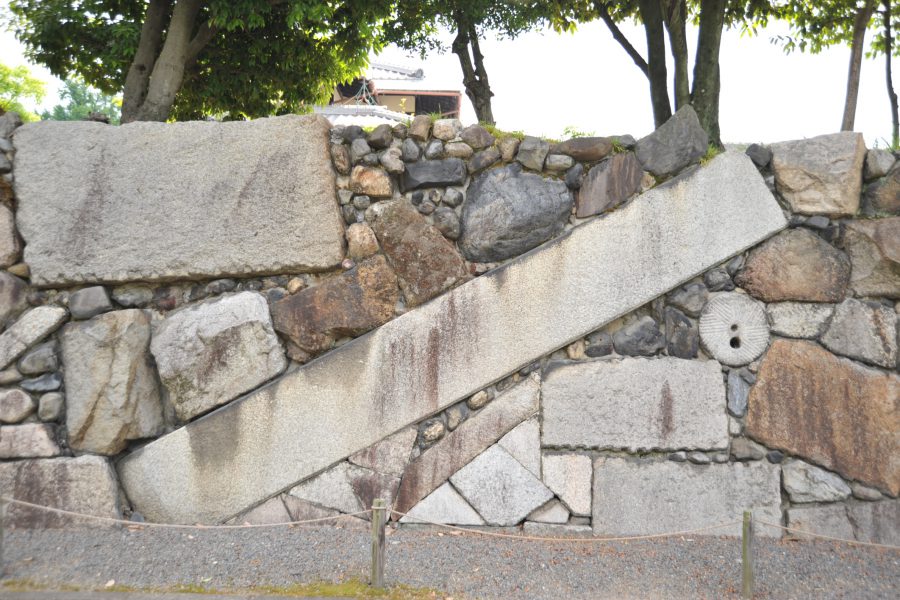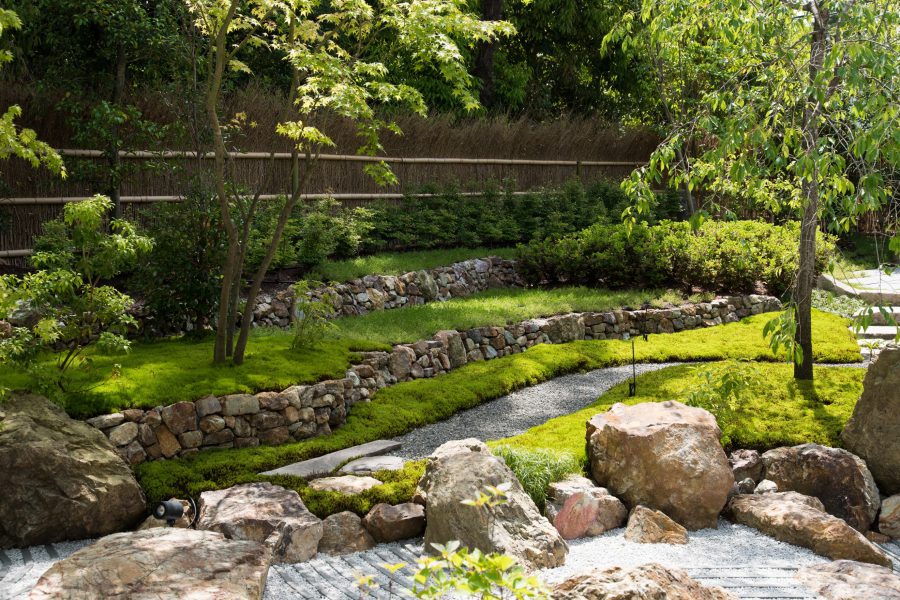Keywords: The Ueyakato Landscape Research Team's Japanese Garden Lexicon
The Stone Wall
2022/06/03
 The stunningly improvised look of the stone wall at Higashi Hongan-ji Temple’s Shōsei-en Garden exemplifies how this scenic element can sometimes be rendered most effective by recycling readily available materials.
The stunningly improvised look of the stone wall at Higashi Hongan-ji Temple’s Shōsei-en Garden exemplifies how this scenic element can sometimes be rendered most effective by recycling readily available materials.
The Stone Wall
Walls can separate things, yet unify them too. We easily call to mind the monumental border walls ancient states from Mesopotamia to China erected for the defensive purpose of keeping invaders out. Yet these same societies also created numerous retaining walls that helped integrate human life with nature by providing protection from flooding and erosion, while also facilitating irrigation.
Examples of both wall types are found from early in Japanese history, but it took the phenomenal development of castle wall technology during Japan’s sixteenth-century civil war period to fully bring out the stone wall’s possibilities as a mediating presence in people’s coexistence with one another and with nature.
In the seventh century, Japanese gardens surrounded ponds with retaining walls by stacking natural stones in perpendicular patterns. Even earlier, the steep terrain of Japan’s geography meant that stone formations used to prevent erosion naturally tended to take on the look of a stone wall and the roofing stones were also sometimes paved as decorative elements on the burial mounds. But it was not until the sixteenth century that the need for high castle walls led to the development of techniques for stabilizing walls by backfilling them with stones and gravel. It was then that stone wall styles proliferated in response to the warriors’ need for a variety of slopes to defend their castles and later appeared in traditional farmhouses and terraced paddy fields. From the military requirements of the Japanese castle town there thus unfolded a new scenic element with rich possibilities for integrating human technology with nature. And these possibilities continued to be explored long after the castle town’s demise. Indeed, during the modern period, natural stones were used to build river dikes and, with the development of techniques for splitting large stones into smaller ones, people were able to freely split and stack stones of any size, leading stone walls came to serve a wide range of functions, including railroad construction.
Stone walls can be constructed in any number of styles, from sequences of stacked layers to seemingly random alignments conveying a partially crumbled appearance. When used effectively, however, they majestically delineate the worlds of humans and nature, architecture and garden, or land and water. They are thus unique examples of walls that create borders between spaces, but at the same time also harmonize them into a single landscape.
 At Koto Heian no Yado Kanade, a traditional-style Japanese lodge in Kyoto’s Okazaki area, Ueyakato Landscape designed a stone wall that evokes the rustic scene of a tiered rice paddy field as a point connecting the landscapes of mountain and village.
At Koto Heian no Yado Kanade, a traditional-style Japanese lodge in Kyoto’s Okazaki area, Ueyakato Landscape designed a stone wall that evokes the rustic scene of a tiered rice paddy field as a point connecting the landscapes of mountain and village.
